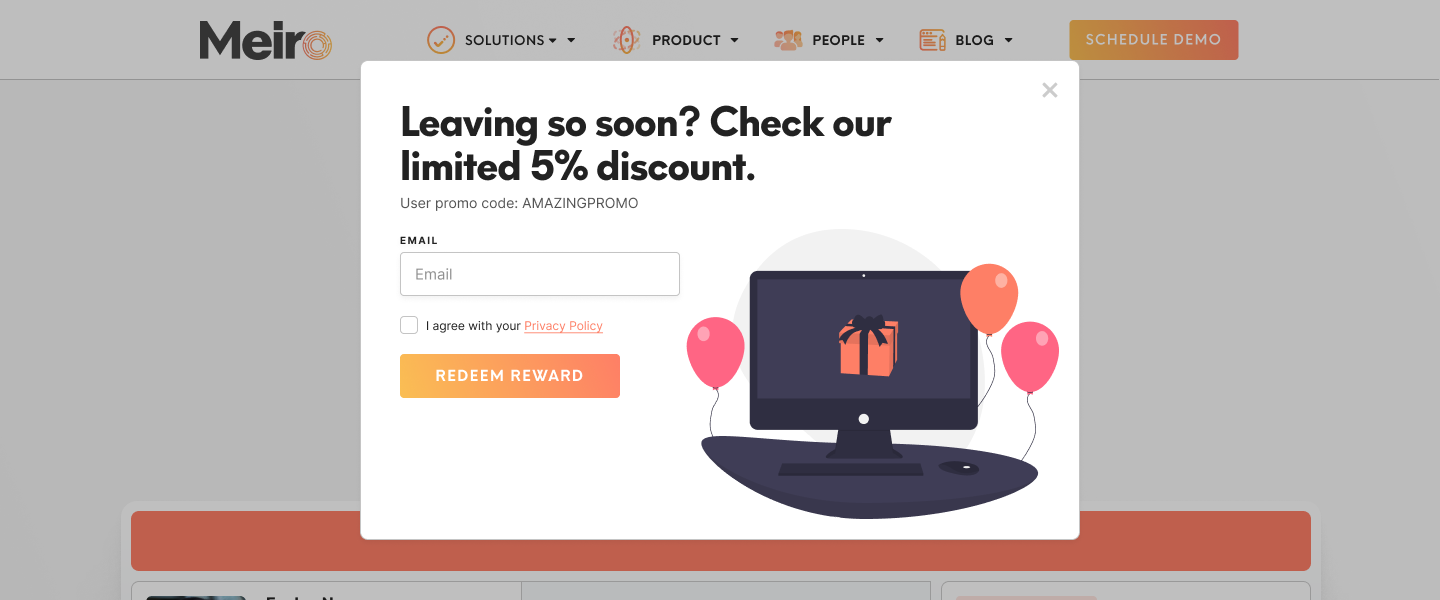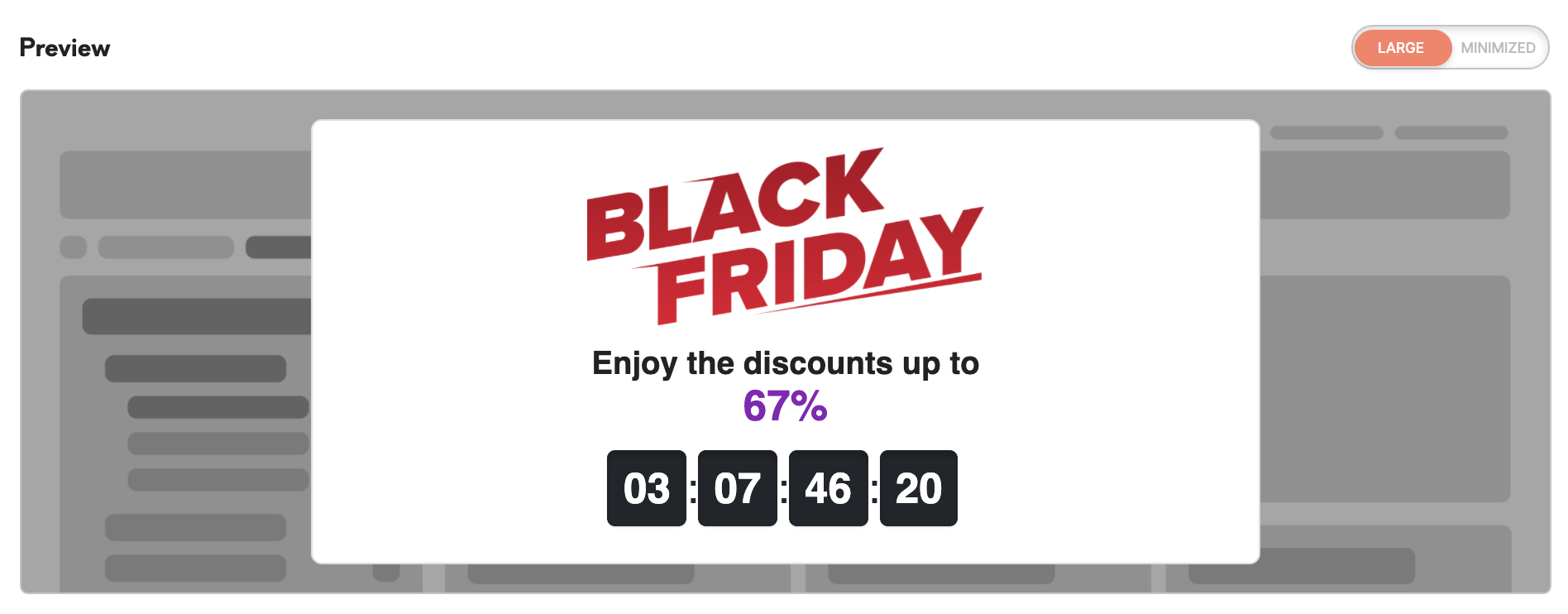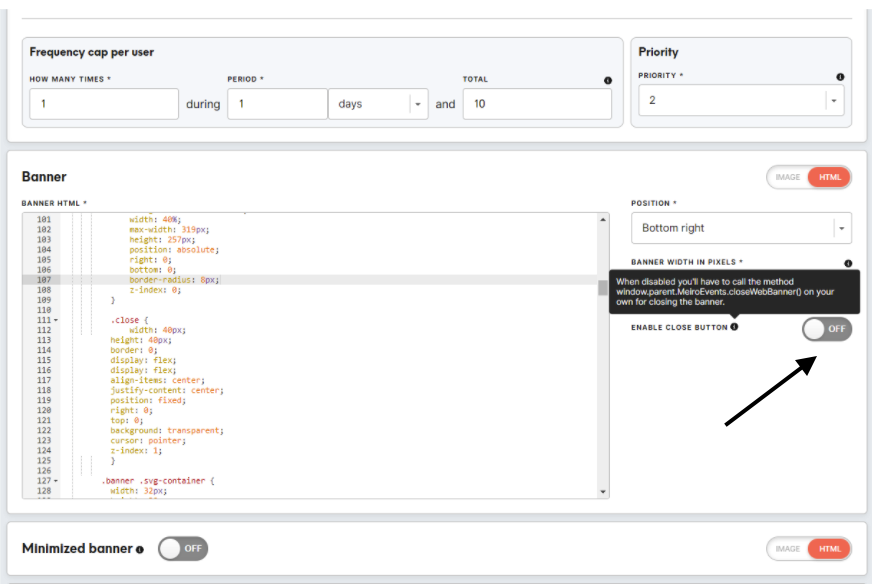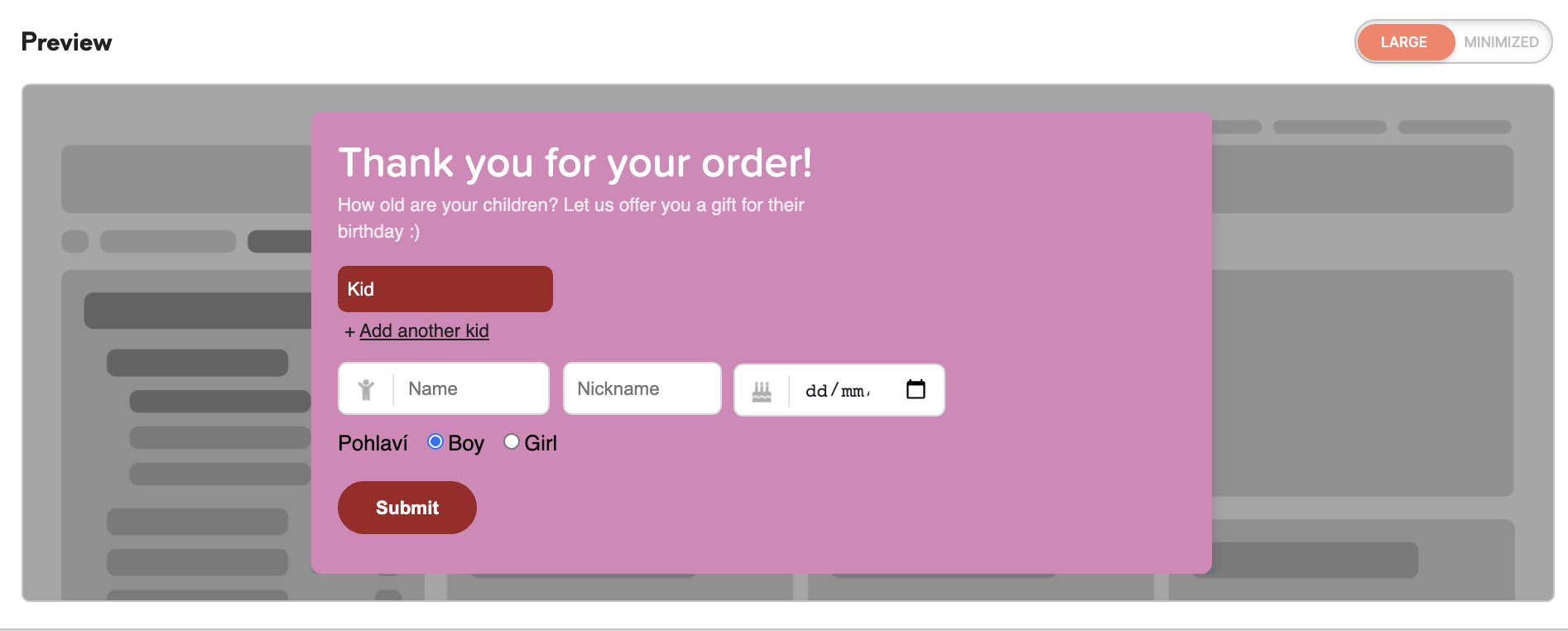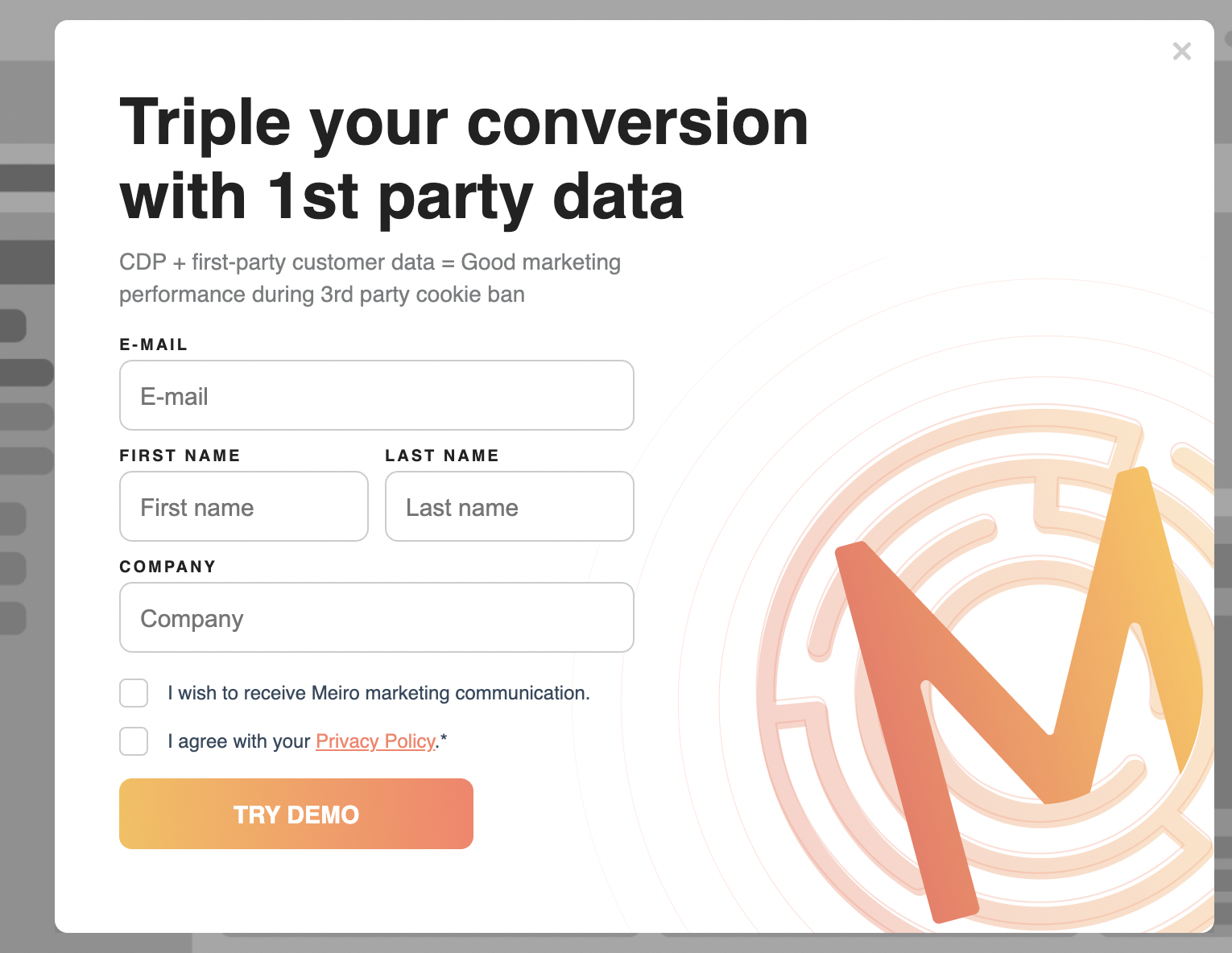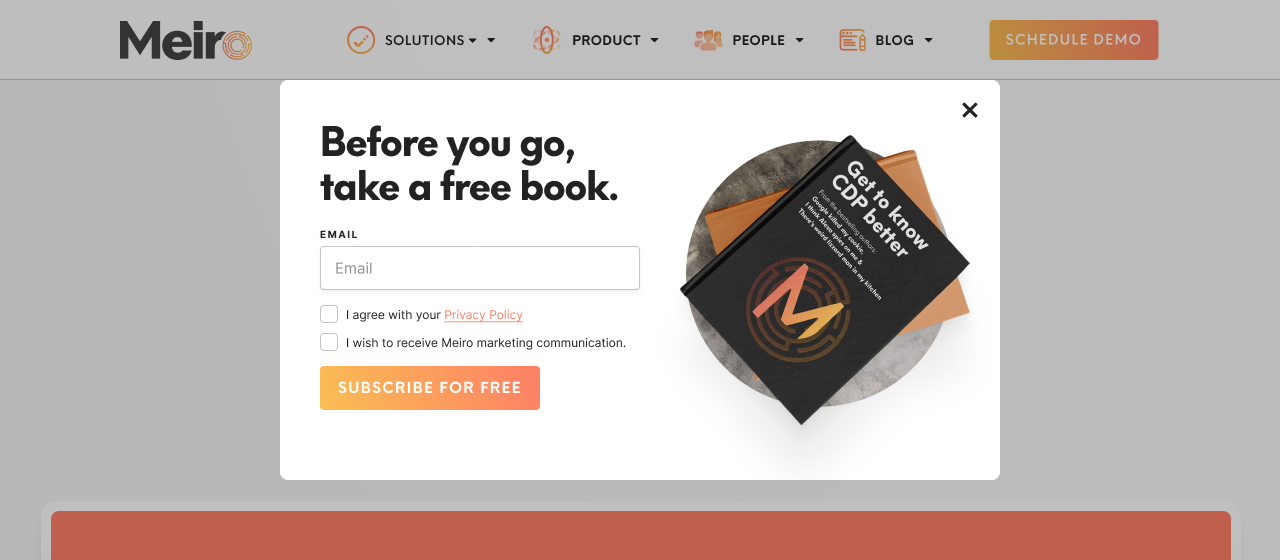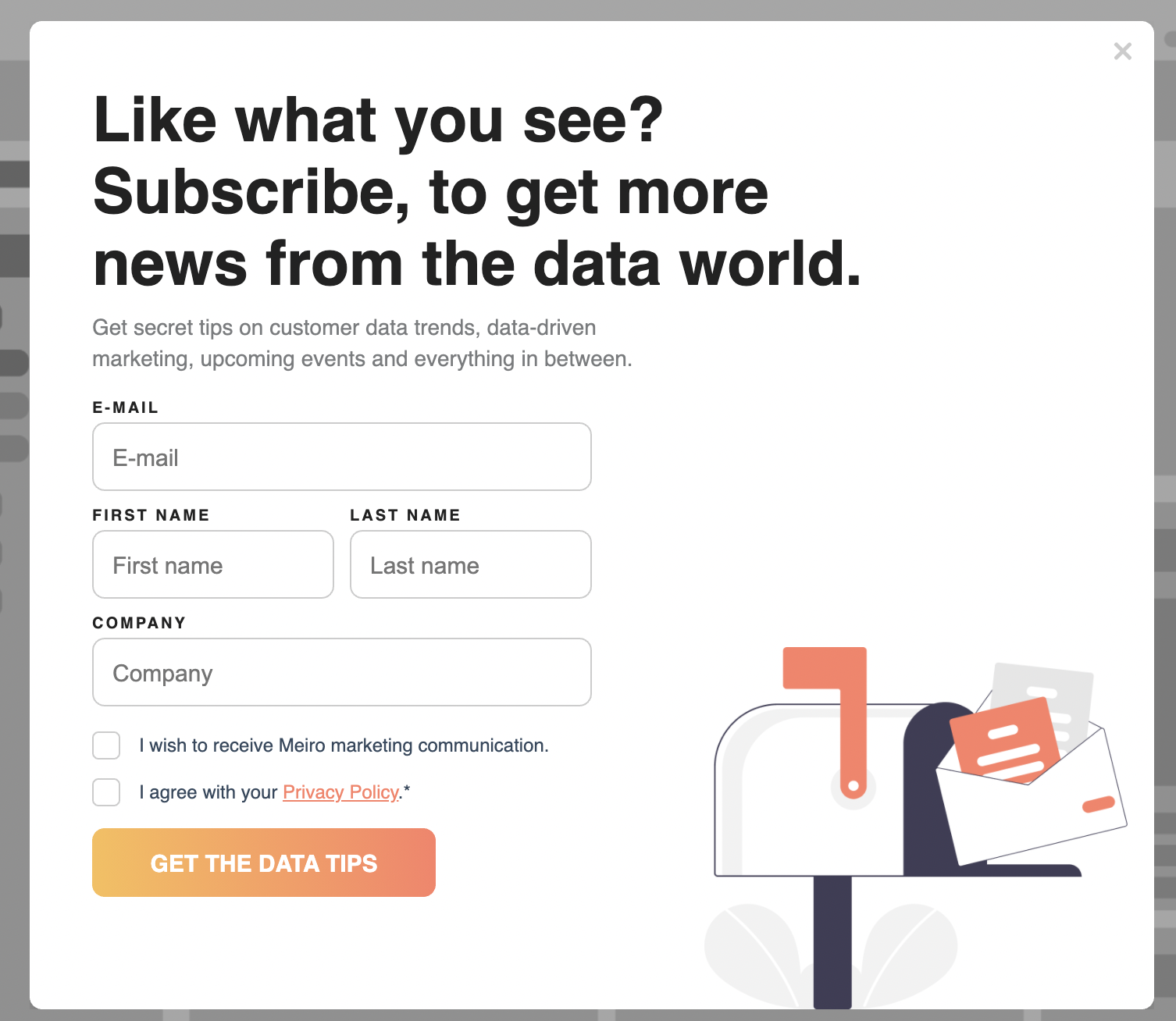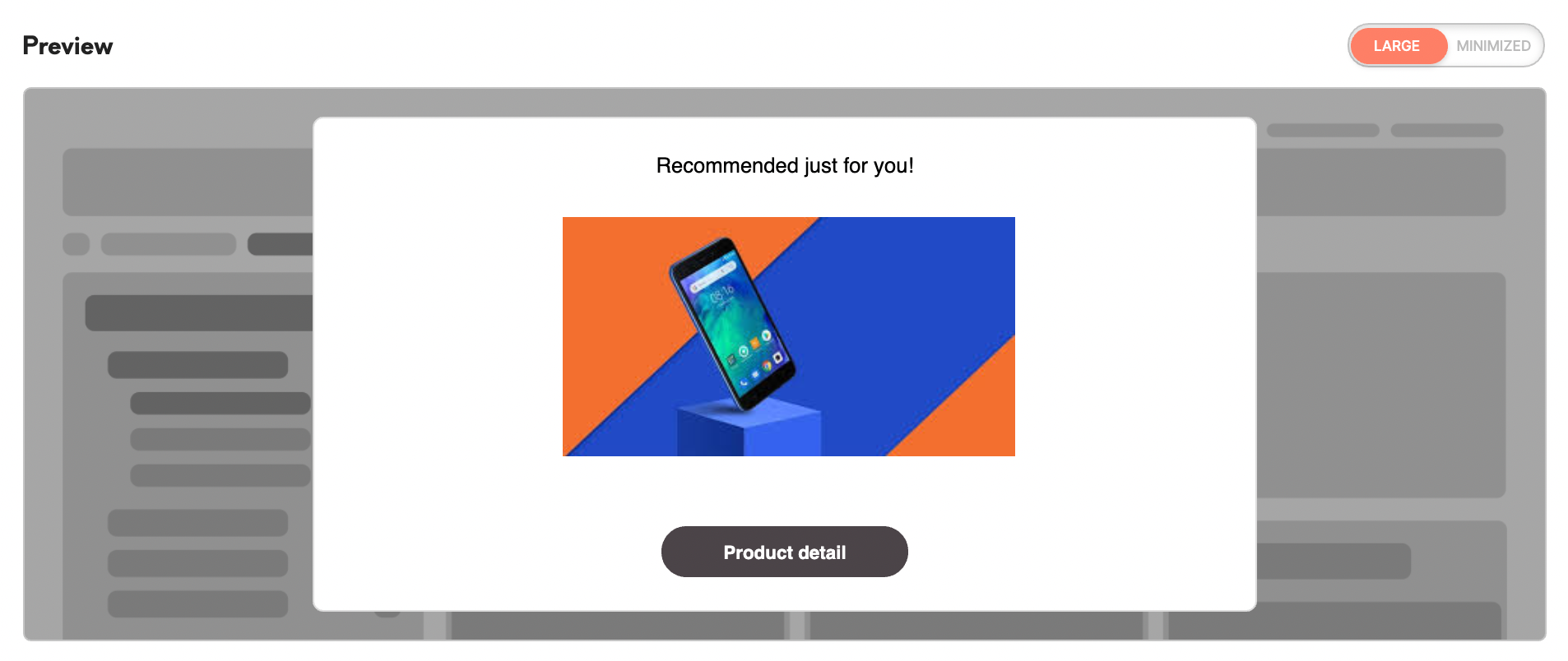Web banners: use cases library (HTML)
|
Prerequisites
To work with web banners, first, they need to be set by the Meiro team: 1. Meiro Events must be implemented. 2. The Web banners tab must be enabled by the administrator for your user role. 3. Meiro Events API connection must be set in the Administration/ Settings tab. |
Remember: Use cases listed below are just examples. It is possible to customize web banners fully.
Learn more: about HTML web banners, please go to this article, as well as an introduction for the developer.
|
Use cases covered:
Data collection (e.g. form submit on thank you page after finishing an order)
|
Abandoned Basket |
To retarget customers who abandoned their shopping basket and did not make a purchase.
|
|
Assisted conversion |
Target customers: assigned but not redeemed vouchers are about to abandon the shopping basket.
|
|
Countdown Black Friday |
To promote discounted goods during a certain period of time and create a sense of urgency by displaying countdown till the time when the promotion will end.
|
|
Customizable close button |
The closing button deployed by our SDK is hardcoded. The first step to creating the web banner button which can be customized is to turn off the default closing button in the banner options.
Important is for the button to have onclick attribute with value
|
|
Data collection(form submit on thank you page after finishing an order) |
Display data collection form on a particular page e.g.
Data acquisition from the clients who successfully made an order.
|
|
Demo schedule |
Display schedule demo messages when a customer is on a particular part of the website.
|
|
Ebook promotion |
Promote an ebook, collect user data to enable downloading an ebook.
|
|
Event sign up |
Display web banners to promote an event and allow users to register.
|
|
Newsletter sign up |
Display a form to sign up for a newsletter on specific URLs.
|
|
Recommended product |
To retarget customers and offer them the product they might be interested in based on the data of their last purchases. In this use case, the recommended engine is returning the most similar product to the most expensive product in the latest order above a certain price.
|






